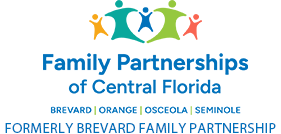Domestic Violence is a preventable yet pervasive problem in society today and touches every socioeconomic class. Every day in America, 1 in 4 women and 1 in 7 men suffer physical violence at the hands of a loved one. On average, nearly 20 people per minute are physically abused by an intimate partner in the United States. This equates to more than 10 million women and men per year[1] and is alarming when you consider most domestic violence incidents go unreported.
Research indicates 1 in 5 women and 1 in 7 men have been victims of severe physical violence by an intimate partner in their lifetime. Domestic violence hotlines are a lifeline for victims in danger, providing support, information, safety planning, and resources. According to the 2014 Domestic Violence Counts Report in the 24-hour survey period, local and state hotlines answered 20,267 calls and the National Domestic Violence Hotline answered 550 calls, averaging more than 14 hotline calls every minute.[2]
Additionally, it is reported that 19% of domestic violence incidents involves a weapon and the presence of a gun in a domestic violence situation increases the risk of homicide by 500%[3]. Seventy two percent of all murder-suicides involve an intimate partner; and 94% of the victims of these murder-suicides are female.
There is also a strong correlation between substance abuse and domestic violence which is also one of the primary causes of removal of a child from their home in Brevard County. According to the Sudbury, Wayland, Lincoln Domestic Violence Roundtable, more than 3 million children in the United States witness domestic violence in their homes every year. Children who live in homes where there is domestic violence present are at significant risk of harm to the child’s physical, emotional and social development according to UNICEF’s “Behind Closed Doors” publication. Children who witness violence in the home also suffer abuse or neglect at high rates (30% to 60%). Children are more likely to intervene when they witness severe violence against a parent – which can place a child at great risk for injury or even death. Research shows that 1 in 15 children are exposed to intimate partner violence each year, and 90% of these children are eyewitnesses to this violence.[4]
Domestic violence is most common among women aged 18-24 and 25-34.[5] This fact places young children at even a greater risk of harm. Additionally when children grow up in a home with domestic violence they are more likely to have health problems, underperform at school, withdraw, engage in aggressive behavior, and suffer from anxiety and depression. Children in homes where domestic violence exists are also vulnerable to the risk of being used in retaliation against a non-offending parent in an effort to maintain control over them. We have all read and heard about such heart breaking events in the news.
As a community we have a responsibility to protect the most vulnerable among us, our children. As family, friends, neighbors, clergy, teachers, doctors, nurses, coaches, etc. our intervention may literally save lives and make a lasting and meaningful difference in the life of a child. Children need adults to speak out and break the silence. If you know someone who is the victim of domestic violence reach out and provide support, resources and concrete help in time of need. Become better acquainted with your local domestic violence shelter and agencies who may be a lifeline for those in need.
The 24 hour Florida Domestic Violence Hotline number is 1-800-500-1119. The following Brevard County shelters are available to assist victims of domestic violence:
- Salvation Army: 321-631-2764
- Serene Harbor: 321-726-8282
- Women’s Center: 321-242-3110, 321-607-6811
Additional domestic violence services and resources are available online here.
Sincerely,
Patricia
[1] http://www.cdc.gov/violenceprevention/pdf/nisvs_executive_summary-a.pdf
[2] http://nnedv.org/downloads/Census/DVCounts2014/DVCounts14_NatlReport_web.pdf
[3] http://www.cdc.gov/violenceprevention/pdf/nisvs_report2010-a.pdf
[4] https://www.ncjrs.gov/pdffiles1/ojjdp/232272.pdf
[5] viiCatalano, S. (2012). Intimate partner violence, 1993-2010. Retrieved from http://www.bjs.gov/content/pub/pdf/ipv9310.pdf








